Related Research Articles
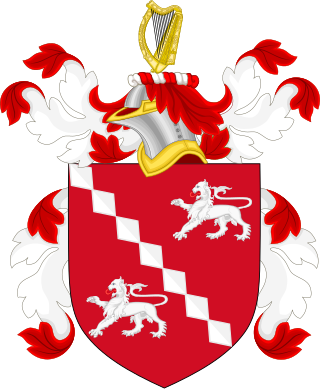
John Whistler was a soldier, born in County Londonderry, Ireland. He ran away from home when a boy, enlisted in the British army, and served as a colour sergeant under General John Burgoyne during the American Revolutionary War. After the surrender at Saratoga, John returned to England and was honorably discharged. Soon afterward, he eloped with Anna, a daughter of Sir Edward Bishop. They emigrated to the United States, and settled at Hagerstown, Maryland.

Fort McRee was a historic military fort constructed by the United States on the eastern tip of Perdido Key to defend Pensacola and its important natural harbor. In the defense of Pensacola Bay, Fort McRee was accompanied by Fort Pickens, located across Pensacola Pass on Santa Rosa Island, and Fort Barrancas, located across Pensacola Bay on the grounds of what is now Naval Air Station (NAS) Pensacola. Fort Pickens was the largest of these. Very little remains of Fort McRee today.
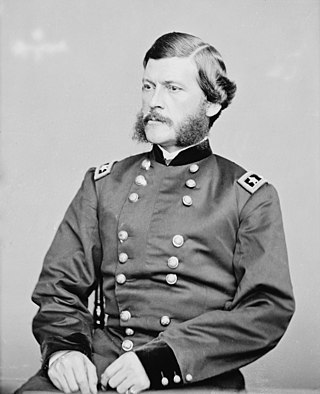
John Grubb Parke was a United States Army engineer and a Union general in the American Civil War. Parke's Civil War service was closely associated with Ambrose E. Burnside, often serving him as chief of staff in major engagements such as Antietam, Fredericksburg and the Overland Campaign. Parke also held significant field commands during Burnside's North Carolina Expedition, Vicksburg and the battle of Fort Stedman as well as brief stints in command of the Army of the Potomac.
Eleazer Derby Wood was a Colonel and American Army officer in the War of 1812. Fort Wood, which became the base of the Statue of Liberty, was named in his honor.

Alden Partridge was an American author, legislator, officer, surveyor, an early superintendent of the United States Military Academy at West Point, New York and a controversial pioneer in U.S. military education, emphasizing physical fitness training, advocating the concept of citizen soldier and establishing a series of private military academies throughout the country, including Norwich University.

Field Marshal Sir John Fox Burgoyne, 1st Baronet, was a British Army officer. After taking part in the Siege of Malta during the French Revolutionary Wars, he saw action under Sir John Moore and then under the Duke of Wellington in numerous battles of the Peninsular War, including the Siege of Badajoz and the Battle of Vitoria. He served under Sir Edward Pakenham as chief engineer during the War of 1812. He went on to act as official advisor to Lord Raglan during the Crimean War advocating the Bay of Kalamita as the point of disembarkation for allied forces and recommending a Siege of Sevastopol from the south side rather than a coup de main, so consigning the allied forces to a winter in the field in 1854.
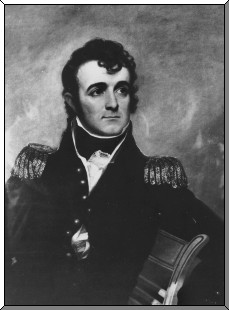
Joseph Gardner Swift was an American soldier who, in 1802, became the first graduate of the newly instituted United States Military Academy in West Point, New York; he would later serve as its third superintendent from 1812 to 1814, and as chief of engineers of the United States Army from 1812 to 1818. In 1814, Swift was elected as member of the American Philosophical Society.

Walker Keith Armistead was a military officer who served as Chief of Engineers of the United States Army Corps of Engineers.

Charles Chouteau Gratiot was born in St. Louis, Spanish Upper Louisiana Territory, now the present-day State of Missouri. He was the son of Charles Gratiot, Sr., a fur trader in the Illinois country during the American Revolution, and Victoire Chouteau, who was from an important mercantile family. His father became a wealthy merchant, during the early years of St. Louis. After 1796, Charles was raised in the large stone house purchased by his father in St. Louis, near the Mississippi River. He made a career out of being a U.S. Army military engineer, becoming the Chief Engineer of the United States Corps of Engineers, and supervised construction of a number of important projects. He was dismissed by William Henry Harrison, which led to a protracted controversy.

Joseph Gilbert Totten fought in the War of 1812, served as Chief of Engineers and was regent of the Smithsonian Institution and cofounder of the National Academy of Sciences. In 1836, he was elected a member of the American Philosophical Society.
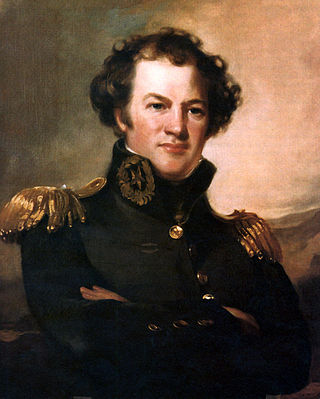
Alexander Macomb was the Commanding General of the United States Army from May 29, 1828, until his death on June 25, 1841. Macomb was the field commander at the Battle of Plattsburgh during the War of 1812 and, after the stunning victory, was lauded with praise and styled "The Hero of Plattsburgh" by some of the American press. He was promoted to Major General for his conduct, receiving both the Thanks of Congress and a Congressional Gold Medal.

Fort Adams is a former United States Army post in Newport, Rhode Island, that was established on July 4, 1799, as a First System coastal fortification, named for President John Adams, who was in office at the time. Its first commanding officer was Captain John Henry who was later instrumental in starting the War of 1812. The current Fort Adams was built between 1824 and 1857 under the Third System of coastal forts; it is part of Fort Adams State Park today.
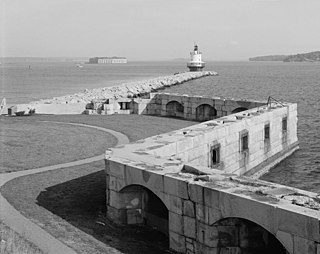
Fort Preble was a military fort in South Portland, Maine, United States, built in 1808 and progressively added to through 1906. The fort was active during all major wars from the War of 1812 through World War II. The fort was deactivated in 1950. It is now on the campus of Southern Maine Community College.
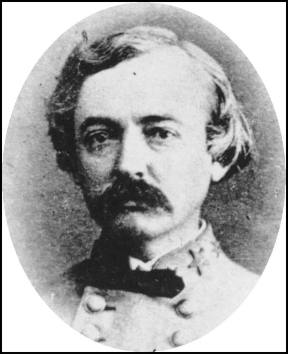
William Henry Chase Whiting was a United States Army officer who resigned after 16 years of service in the Army Corps of Engineers to serve in the Confederate States Army during the American Civil War. He was wounded at the Second Battle of Fort Fisher by a musket ball to his leg, and died in prison camp on March 10, 1865, of dysentery.

John Gross Barnard was a career engineer officer in the U.S. Army, serving in the Mexican–American War, as the superintendent of the United States Military Academy and as a general in the Union Army during the American Civil War. He served as Chief Engineer of the Army of the Potomac, 1861 to 1862, Chief Engineer of the Department of Washington from 1861 to 1864, and as Chief Engineer of the armies in the field from 1864 to 1865. He also was a distinguished scientist, engineer, mathematician, historian and author.

George Washington Cullum was an American soldier, engineer and writer. He worked as the supervising engineer on the building and repair of many fortifications across the country. Cullum served as a general in the Union Army during the American Civil War, primarily in the Western Theater and served as the 16th Superintendent of the United States Military Academy. Following his retirement from the Army, he became a prominent figure in New York society, serving in many societies, and as vice president of the American Geographical Society. The society named the Cullum Geographical Medal after him.
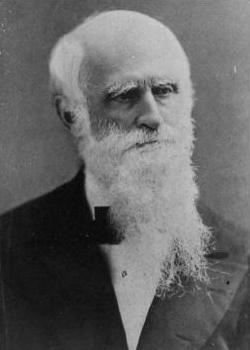
Henry Brewerton was a career engineering officer in the United States Army, serving as the superintendent of the United States Military Academy and then as a colonel in the Union Army during the American Civil War. He was nominated for appointment to the grade of brevet brigadier general in the Regular Army by President Andrew Johnson on December 11, 1866, to rank from March 13, 1865, and the United States Senate confirmed the appointment on February 23, 1867.

Decius Wadsworth was a Colonel in the U.S. Army before and during the War of 1812. He graduated from Yale College in 1785 with Honors. He was a renowned military organizer, engineer and inventor. In 1812, he was selected to be the 1st Chief of Ordnance for the new United States Army Ordnance Department.
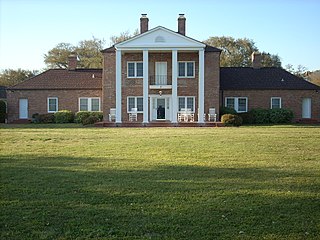
Fort Johnston was a British fort, later a United States Army post, in Brunswick County, North Carolina on Moore Street near Southport, North Carolina. It stands on the west bank of the Cape Fear River, four miles above its mouth.

George Bomford was a distinguished military officer in the United States Army and an inventor and designer of weapons and defensive installations. He served as the second Chief of Ordnance for the U.S. Army Ordnance Corps.